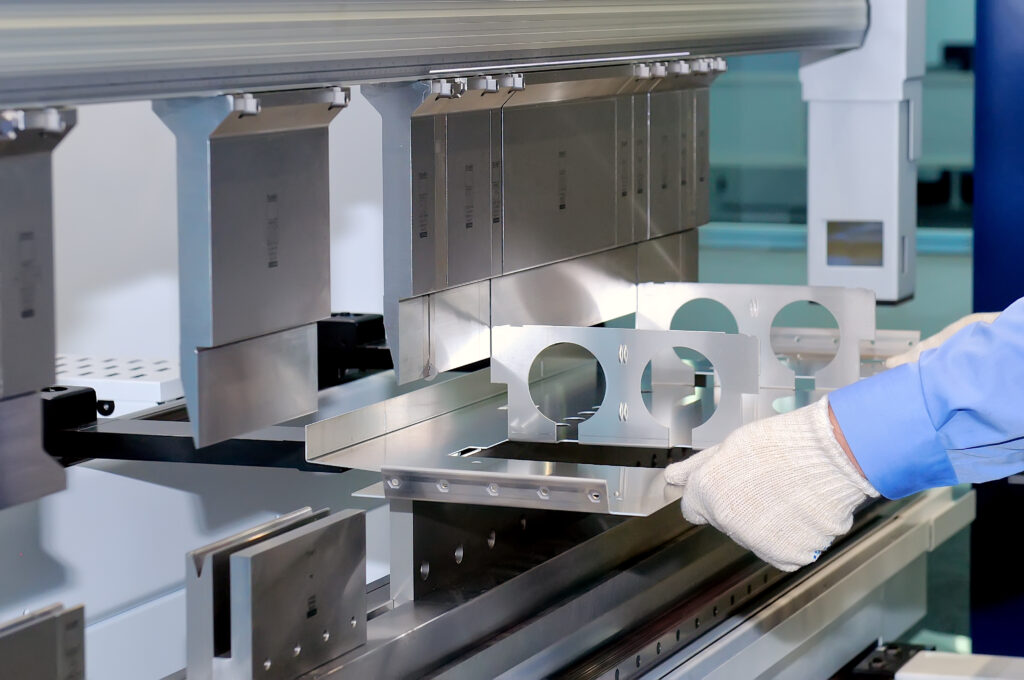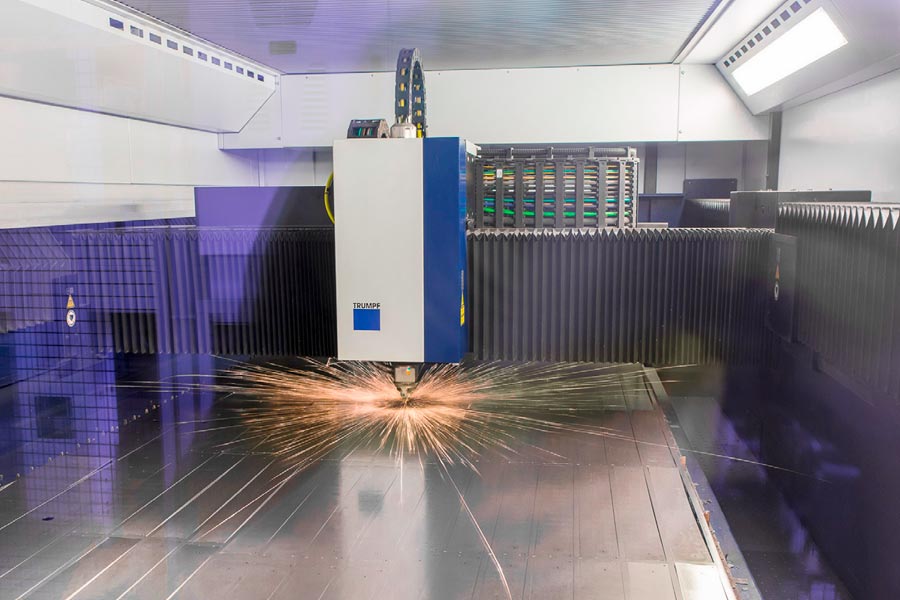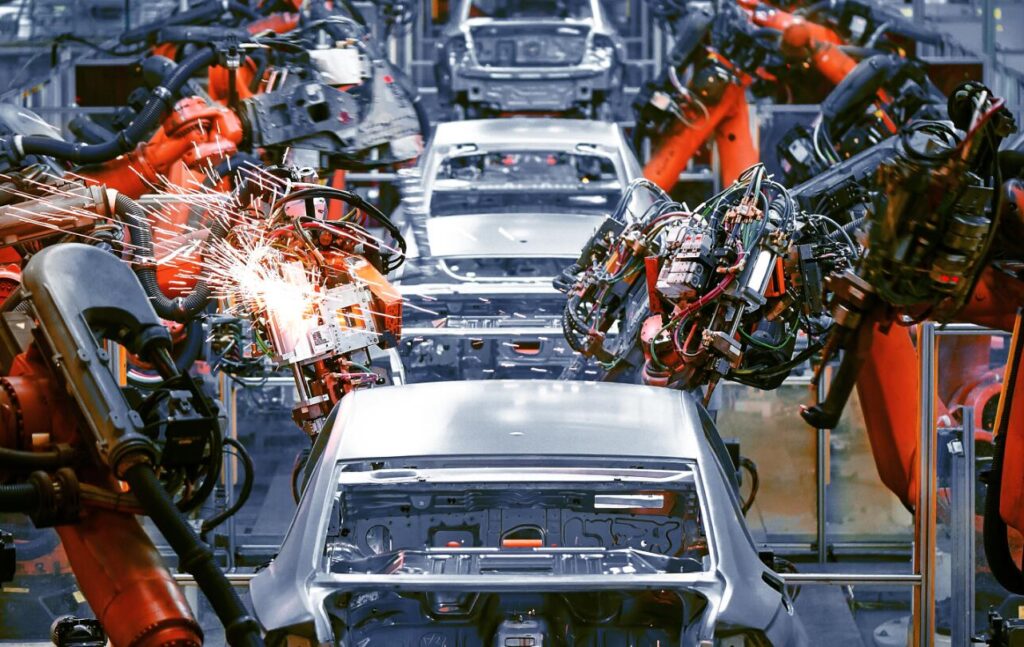Are you looking for a reliable way to turn flat sheets of metal into intricate structures? You might need sheet metal fabrication. It’s a process that’s important to a lot of industries, including automotive and aerospace, because it’s precise and strong. But what is sheet metal fabrication and why is it so important for manufacturing today?
Sheet metal fabrication is the process of turning flat sheets of metal into structures or products using a combination of cutting, bending, welding, and assembling techniques. It’s a way to make all kinds of metal parts for industries like automotive, medical, aerospace, and more.
Understanding sheet metal fabrication can help you make better decisions for your projects. When you know more about the materials, processes, and applications, you’ll understand why so many people use and trust this process. Whether you’re a product designer, supply chain manager, or mechanical engineer, knowing how sheet metal fabrication works can help you do better work on your projects.

What Materials are Used in Sheet Metal Fabrication?
Choosing the right material is essential for your sheet metal fabrication project to be successful. Here are some of the most common materials used:
• Aluminum: Known for its strength-to-weight ratio and high conductivity, aluminum is the ideal material for automotive parts, electrical devices, and cooking pots.
• Aluminized Steel: Combining the strength of carbon steel with aluminum’s corrosion resistance, aluminized steel is great for high-temperature applications such as kitchen appliances.
• Carbon Steel: Used in all kinds of products for industry and consumers, carbon steel is harder and stronger when heat-treated.
• Copper: With excellent electrical and thermal conductivity, copper is used in sinks, rooftops, gutters, and doors, although it is more expensive than aluminum.
• Galvanized Steel: Coated with zinc to resist corrosion, galvanized steel is used for car bodies, pipes for water, fences, and roofs.
• High-Strength Steel: Used for military armor plates, high-strength steel is alloyed with elements like carbon, manganese, and copper to make it harder.
• Stainless Steel: Stainless steel is great for anything that needs to resist corrosion, heat, or fire, including pots, storage tanks for chemicals, and equipment for processing food.
• Titanium: With its high strength-to-weight ratio and resistance to corrosion, titanium is used in parts for airplanes, medical equipment, and things used in construction.

How Does the Sheet Metal Fabrication Process Work?
- Sheet metal fabrication involves several steps that are crucial to getting the final product you want. Here’s how it works:
- Design:The first step in the fabrication process is design. Designers use CAD software to create initial sketches or 2D/3D models that show the size, tolerances, materials, and finishes for the product. It’s a critical step because it sets the stage for everything that follows.
- Cutting:Cutting is the first physical step in fabrication. Metal cutting techniques like laser cutting, shearing, band saws, and chop saws are used to cut metal accurately. Laser cutting is known for being precise because it follows the design exactly, making sure each piece is the right size.
- Bending:After cutting, it’s time to bend the metal, or do CNC folding. This is done by using manual press brakes or automated panel bending machines to make sharp bends and angles. It’s important to use the press brakes to keep the metal at the right angle.
- Forming:Forming changes the shape of the metal without changing its mass. Different machines and techniques are used to bend or deform the metal into the shape you need, making the fabrication process more flexible.
- Welding:Welding is what joins the metal pieces together. There are different methods, like MIG welding, TIG welding, robotic MIG welding, and spot welding. To keep the metal from warping or having problems, techniques like sand cooling, staggered welding, and using heavy fixtures are used.
- Straightening:If there are any problems, straightening with an oxy-acetylene torch is used. This process uses heat to gently remove defects and make sure the metal parts fit together correctly.
- Finishing:Finishing processes like sandblasting, priming, and painting get the metal ready for its final use. There are other methods like polishing, powder coating, anodizing, passivation, and laser marking, which make the metal look better and last longer.
- Assembly:Finally, the parts are put together to make the final product. Full-service electro-mechanical assembly is available to make sure the product is ready to go when you get it.What Are the Applications of Sheet Metal Fabrication?

Sheet metal fabrication is used in a variety of industries, each with different applications:
- Automotive:Fabrication is used to make automotive parts and components, ensuring they’re precise and tough.
- Medical Equipment:Surgical instruments and housings are made using sheet metal fabrication to ensure they’re high-quality and sterile.
- Consumer Electronics:Enclosures and brackets for electronics are fabricated to protect and support the delicate parts.
- Aerospace:Panels, mounts, and brackets are fabricated for the aerospace industry, where things need to be precise and strong.
- Kiosks, Vending Machines & Enclosures:Vending machines and kiosks are made using sheet metal fabrication so they’re tough and work well.
- Construction & Security:Security doors, guard rails, and custom security enclosures are fabricated to meet strict safety standards.
- Retail:Visual merchandise, product displays, and retail display units are fabricated to make retail spaces that look good and work well.
- Science, Medical & Food:Commercial kitchens have worktop surfaces, storage units, and sinks made using sheet metal fabrication, often with stainless steel because it’s tough and hygienic.
- Transportation:Emergency vehicles have parts made using fabrication, such as glove-box enclosures, door-handle mounts, and tail-lift door surrounds, to be safe and work well.

What Are the Advantages of Sheet Metal Fabrication?
Sheet metal fabrication has several advantages:
• Precision and Flexibility: It can be used to make complex shapes and structures that are very precise.
• Cost-Effective: It’s good for small and big production runs, so it’s great for all kinds of projects.
• Durability: The things you make are strong and last a long time, even when they’re used a lot.
• Versatile Finishing Options: There are lots of ways to finish the metal that make it look good and keep it from getting rusty or worn out.

What Are the Challenges and Solutions in Sheet Metal Fabrication?
- Like any kind of manufacturing process, sheet metal fabrication has challenges:
- Design-to-Production Feasibility:Making sure you can actually make what you’ve designed requires close collaboration between the people who design the parts and the people who make them. This helps you find problems early and fix them.
- Consistent Surface Treatments:It can be hard to make sure the surface treatments are the same on all the parts. By using good quality control and reliable finishing processes, you can make sure everything looks the same.
- Reducing Defect Rates and Improving Packaging:If you have a lot of defects and don’t package the parts well, the parts can get damaged. By using good quality control and making sure the parts are packaged right, you can make sure the parts get to the customer in good shape.

Conclusion
Sheet metal fabrication is an essential and versatile process in manufacturing today that allows you to make metal structures that are precise, tough, and cost-effective. By understanding the materials, processes, and applications, you can use this technique to make your products and business better. If you work with people who know what they’re doing, you can trust that you’ll get a good result. That’s why sheet metal fabrication is a good choice for lots of different industries today.
The global sheet metal market size was $265 billion in 2020 and is expected to grow by 5.5% from 2021 to 2028. With more than 200 machines in one place, we can run things smoothly to make sure we’re doing good quality and get parts out to you on time.

